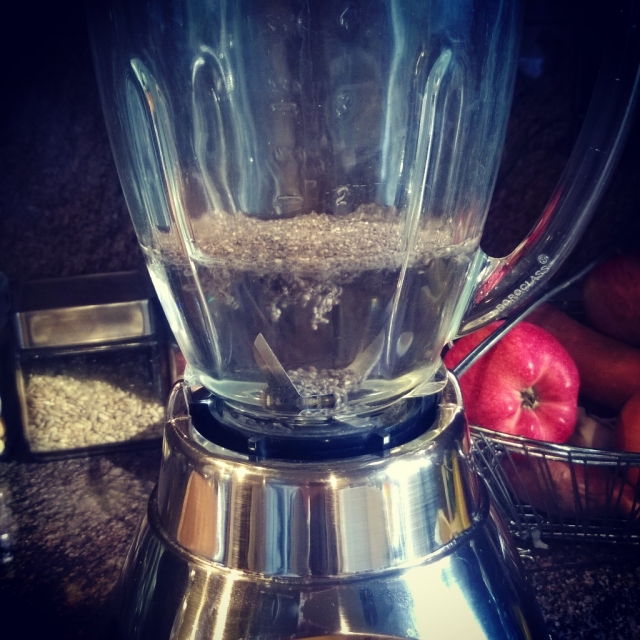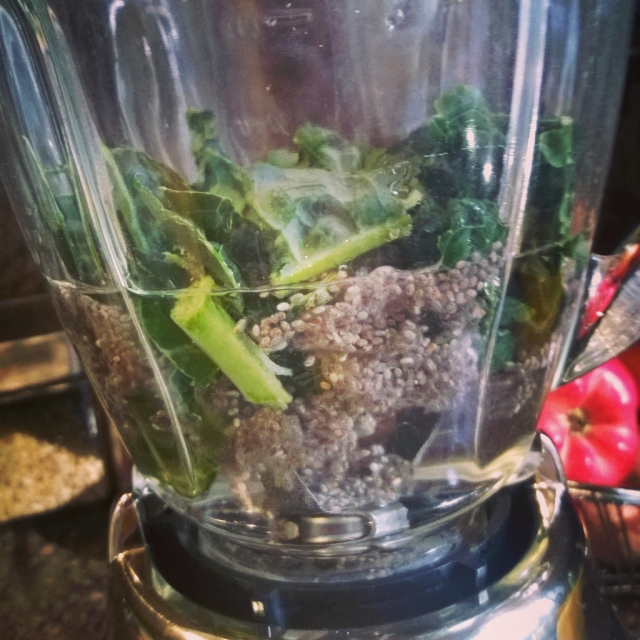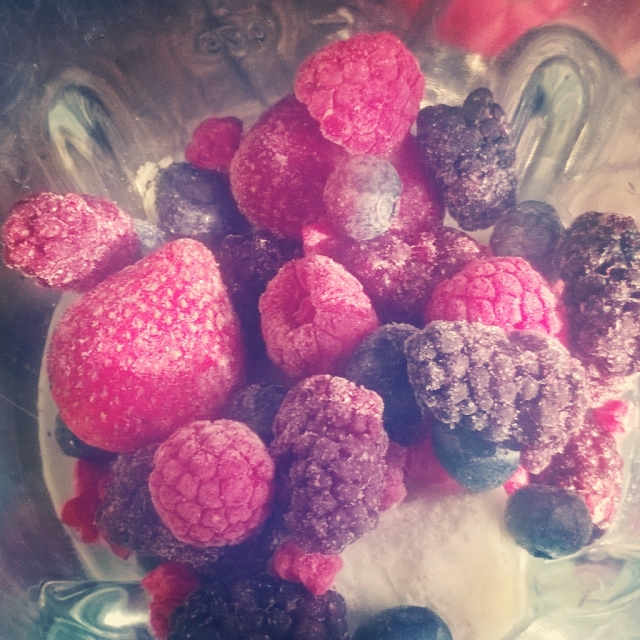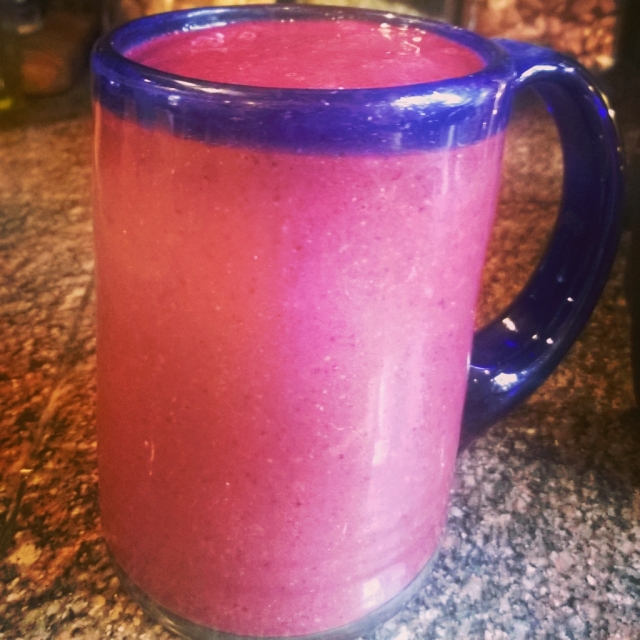I once heard Lynne Rossetto Kaspar on The Splendid Table (when she was still the host) advise someone who wanted to learn to cook to simply start with sauteing seasonal veggies in olive oil on the stove top, make any grain product to go with it and add the two together. She also said that meat could be added if wanted, or beans or some other protein, but to start with what produce is in season and whatever grain product sounds good with it~ rice, quinoa, pasta, bread, couscous…you get the picture. I love that advice and how easily you can add herbs, spices, and sauces to create many different flavors while using the same basic foods and techniques. Spring is a perfect time to put her advice into action with simple grain bowls that can take on any region’s flavors with a few choice ingredients and happily, just one or two pots. Here are five recipes to take you on a world tour to add some cultural flavors without much fuss to your week.
The following parts of this post (until the last paragraph) were provided by New Hope Network. I am a member of the New Hope Influencer Co-op, a network of health and wellness bloggers committed to spreading more health to more people. These recipes were created by New Hope Network and Jane Burnett, RD, with photos by Jennifer Olson.
Recipe 1:

Middle Eastern flavors: The cuisine of various countries in the Middle East—including Indian, Arab, Israeli, Greek, Persian, Turkish and Armenian food—is diverse, but typically used ingredients include chickpeas, olives, olive oil, rice, dates, honey, mint and parsley. Family-style eating, in which people take their food from a communal plate in the center of the table, is common in the Middle East. For authenticity sake, place the grain bowl components in the center of the table and let diners assemble their own.
Tahini-Chickpea-Pistachio Bowls
Makes 6 servings; Vegan
For the Pickled Red Onions
2 cups water
½ cup red wine vinegar
2 teaspoons salt
2 teaspoons agave syrup
2 cups thinly sliced red onions
For the Tahini cream
½ cup tahini
6 tablespoons fresh lemon juice
¼ cup water
1 tablespoon ground cumin
1 teaspoon ground black pepper
½ teaspoon salt
For the Bowls
1 pound cauliflower, cut into small florets
4 cups ¾-inch sweet potato cubes (2 medium)
3 tablespoons olive oil
1 tablespoon yellow curry powder
½ teaspoon dried thyme
2 cups cold water
1 cup dry quick-cooking bulgur (TRY: Bob’s Red Mill)
1 (15-ounce) can chickpeas, drained and rinsed
1/3 cup pitted and chopped kalamata olives
½ cup shelled, roasted pistachios
½ cup fresh flat-leaf parsley
The night before serving, prepare Pickled Red Onions: In a saucepan over high heat, bring water, vinegar, salt and agave syrup to a boil. Remove from heat, and stir in sliced red onions. Let mixture cool to room temperature; then refrigerate overnight.- Preheat oven to 400°. Prepare Tahini Cream: In a blender, combine all Tahini Cream ingredients; blend until smooth, and refrigerate until ready to use.
- In a large bowl, toss cauliflower florets and sweet potato cubes with oil, curry powder and thyme. Spread vegetables in a single layer on a baking sheet with no edges. Roast cauliflower and sweet potatoes for 30–40 minutes, stirring every 8–10 minutes, until tender and browned.
- In a pot over medium-high heat, bring 2 cups water and bulgur to a boil. Cover, and simmer for 12 minutes or until bulgur is tender. If bulgur is soggy after 12 minutes, reduce heat to low and cook 1–2 minutes more. Remove pot from heat, and stir in chickpeas and olives.
- To serve, divide bulgur mixture among bowls. Top with roasted cauliflower, sweet potatoes and Pickled Red Onions. Serve with a generous dollop of Tahini Cream, and garnish bowls with pistachios and parsley.
PER SERVING (1½ cups): 505 cal, 21g fat (11g mono, 7g poly, 3g sat), 0mg chol, 641mg sodium, 66g carb (14g fiber, 7g sugars), 16g protein
Recipe 2:

Mexican flavors: Mexican cuisine is primarily a fusion of indigenous Mesoamerican cooking with Spanish elements added in. Staples of the
food culture include corn, beans, avocados, tomatoes and chile peppers. This flavorful grain bowl incorporates all the familiar flavors of Mexican food, with a spicy, creamy polenta as the base.
Green Chile Cheese Polenta Bowls
Makes 5 servings; Gluten free, Vegetarian, Staff favorite
For the Black Bean Relish
1 (14.5-ounce) can black beans, rinsed and drained
2 Roma tomatoes; seeded and chopped
½ cup chopped red bell pepper
¼ cup diced red onion
1 ripe avocado; pitted, peeled and diced
1 tablespoon fresh lime juice
½ cup loosely packed fresh cilantro
1 clove garlic, minced
1 tablespoon extra-virgin olive oil
1 tablespoon red wine vinegar
¼ teaspoon salt
For the Polenta
4 cups water
½ teaspoon salt
1 cup polenta (corn grits or stone-ground whole cornmeal)
1 cup shredded sharp cheddar cheese
1 tablespoon butter
½ cup medium Hatch flame-roasted green chile (TRY: 505 Southwestern)
1 tablespoon extra-virgin olive oil
1 (5-ounce) package coarsely chopped kale
¼ teaspoon ground black pepper
½ cup pepitas, toasted
Prepare relish: In a medium bowl, combine beans, tomatoes, bell pepper and red onion. Toss avocado with lime juice; add bean mixture along with cilantro, garlic, oil, vinegar and salt. Gently toss to combine, and set aside at room temperature.- In a large saucepan, bring water and 1 teaspoon salt to a boil. Whisk polenta into the boiling water, and decrease heat to low. Simmer on low for about 15 minutes, whisking often until mixture thickens and corn granules are tender. Remove pan from heat, and stir in cheese and butter until melted. Stir in green chile, cover, and set aside.
- In a large skillet over medium-high heat, heat 1 tablespoon oil. Add kale, and sprinkle with pepper; sauté 3–4 minutes until kale starts to soften.
- To serve, divide polenta among bowls and top each with a portion of the sautéed kale and Black Bean Relish. Sprinkle with pepitas, and serve warm.
PER SERVING (1¾ cups): 551 cal, 23g fat (11g mono, 5g poly, 7g sat), 21mg chol, 762mg sodium, 68g carb (12g fiber, 3g sugars), 19g protein
Recipe 3:

Italian flavors: Gathering and lingering over food is central to Italian culture.
The dishes employ simplicity, relying on high-quality ingredients rather than elaborate presentation. Many dishes feature tomatoes, bell peppers, potatoes, wine and cheese. A natural plant-based cuisine, modern Italian focuses on the nuances of its regions, though nationwide the emphasis is on food produced by the earth.
Italian Herbed Farro Bowls
Makes 6 servings; Vegetarian
2 cups uncooked farro
6 cups water
3 tablespoons extra-virgin olive oil, divided
4 cloves garlic, minced
1 large fennel bulb, cut into 1 /8-inch slices
2 cups ¼-inch carrot slices (3 large carrots)
1 cup halved cherry tomatoes
1 cup dry white wine
½ teaspoon fennel seed, crushed
Juice and peel of 1 lemon, divided
1 tablespoon dried, mixed Italian herbs
½ teaspoon salt
¼ teaspoon ground black pepper
1 (5-ounce) package baby spinach
¼–½ teaspoon crushed red pepper flakes
¼ cup snipped flat-leaf parsley
½ cup coarsely chopped almonds, toasted
¼ cup shredded Parmesan cheese
- Rinse farro. In a large saucepan, place farro and water. Water should cover farro. Bring to a boil; then reduce heat and simmer until tender, stirring once or twice, about 30 minutes. Drain excess water.
- Meanwhile, in a very large nonstick skillet over medium-high heat, heat 1 tablespoon oil. Add garlic and sauté until softened, about 3 minutes. Add another 1 tablespoon oil, along with sliced fennel and carrots. Reduce heat to medium and cook, stirring often, until vegetables are crisp-tender and browned, 10–12 minutes. Remove skillet from heat, and add tomatoes, wine and fennel seed. Return to heat, and cook until almost all the liquid has evaporated and tomatoes are tender, about 5 minutes. Stir in 2 tablespoons lemon juice, lemon peel, Italian herbs, salt and pepper. Remove from heat, and add spinach leaves; toss until spinach is slightly wilted.
- To farro, add remaining 1 tablespoon oil, 1 tablespoon lemon juice, red pepper flakes and parsley; toss.
- To serve, divide farro mixture among bowls and top with vegetable mixture. Garnish with almonds and Parmesan.
PER SERVING (1¼ cups): 322 cal, 13g fat (9g mono, 2g poly, 2g sat), 2mg chol, 354mg sodium, 35g carb (7g fiber, 5g sugars), 10g protein
Recipe 4:

Korean flavors: Korean cuisine is steeped in agricultural traditions and known for having a lot of side dishes. Here we combine some of the most common flavors in one bowl. Kimchi—which is salted, seasoned and fermented cabbage and radishes—is used as a condiment and present at almost every Korean meal. Other frequently used ingredients include soy sauce, ginger, garlic, napa cabbage and gochujang, which is fermented red chile paste. Look for it in the Asian section of your local natural products store.
Spicy Korean Quinoa, Veggie & Tofu Bowls
Makes 6 servings; Gluten free, Vegan, Staff favorite
For the Citrus Soy Dressing
¼ cup fresh orange juice
3 tablespoons reduced-sodium soy sauce or tamari
2 tablespoons freshly squeezed lemon juice
1 tablespoon honey
1 teaspoon lemon zest
For the Bowls
1 (14-ounce) package extra-firm tofu, well-drained
and cut into ½-inch cubes
3 tablespoons gochujang (Korean fermented red chile sauce)
4 tablespoons vegetable oil
3 cloves garlic
8 ounces thickly sliced baby bella mushrooms
8 cups thinly sliced napa cabbage (1 medium)
4 cups sliced zucchini
½ teaspoon salt
4 cups hot, cooked quinoa
1 large, ripe avocado; sliced
¾ cup spicy kimchi
4 teaspoons black or white sesame seeds
Sriracha sauce (optional)
- Prepare Citrus Soy Dressing: Place all dressing ingredients in a jar with lid; close lid, and shake vigorously until blended. Refrigerate until needed.
- In a bowl, carefully toss tofu cubes with the gochujang; refrigerate from 30 minutes up to overnight. While tofu is marinating, prepare vegetables.
- Preheat oven to 400°. Line a rimmed baking sheet with aluminum foil, and rub generously with 2 tablespoons oil to prevent tofu from sticking. Spread tofu in a single layer on baking sheet. Bake tofu in lower third of oven for 10 minutes. Remove, and carefully turn tofu pieces over with a thin spatula.
Bake another 10 minutes, remove and turn again. Bake another 5 minutes.
- Meanwhile, in a large skillet over medium-high heat, heat 1 tablespoon oil. Add garlic and mushrooms; sauté 5–6 minutes or until mushrooms are tender and liquid has cooked off. Remove mushrooms to a plate, and set aside. Add remaining 1 tablespoon oil to same skillet, and reduce heat to medium. Add cabbage and sauté, stirring often, for 8 minutes. Add sliced zucchini and salt to skillet with cabbage. Continue to sauté until cabbage begins to brown and zucchini is tender but still bright green, about 8 minutes.
- To serve, divide hot quinoa among bowls. Top with piles of cabbage and zucchini mixture, mushrooms, baked tofu, avocado and kimchi. Drizzle 2 tablespoons Citrus Soy Dressing over each serving and sprinkle with sesame seeds and Sriracha, if using.
PER SERVING (1½ cups): 472 cal, 17g fat (9g mono, 6g poly, 2g sat), 0mg chol, 573mg sodium, 56g carb (8g fiber, 8g sugars), 18g protein
Recipe 5:

Thai flavors: Balance and texture are paramount in Thai cuisine; most dishes contain elements of sweet, salty, spicy and bitter tastes. This dish hits all those familiar flavor spots: sweet from the apples and red peppers, salty and spicy from the peanut sauce and bitter from the brussels sprouts. Chef David Thompson, a Thai food expert, says that Thai cuisine—unlike many others—rejects simplicity and is about “juggling disparate elements to create a harmonious finish.”
Jasmine Rice, Edamame & Apple Bowls with Peanut Sauce
Makes 4 servings; Gluten free, Vegan
1 cup uncooked white or brown jasmine rice
1 cup frozen, shelled edamame
3 tablespoons coconut oil
4 cups trimmed and quartered brussels sprouts (1 pound)
1 large sweet red pepper, seeded and julienned
2 medium Granny Smith apples, julienned
½ cup purchased or Homemade Peanut Sauce (see recipe below to make your own)
½ cup coarsely chopped roasted peanuts
Fresh cilantro leaves
- Cook rice according to package directions. Add edamame to rice for last 3 minutes of cooking time. Remove from heat, but keep covered.
- In a large skillet, heat coconut oil. When oil is melted, sauté quartered brussels sprouts and red pepper slices until brussels sprouts are crisp-tender and bright green but starting to brown, 5–6 minutes. If skillet gets too dry, add a few tablespoons of water. Turn off heat, and cover skillet on stovetop to allow vegetables to steam for 2–3 minutes more.
- To serve, divide rice-edamame mixture among bowls. Arrange sautéed vegetables and apples over rice. Top each serving with 2 tablespoons purchased or Homemade Peanut Sauce*, and garnish with peanuts and cilantro.
PER SERVING (2 cups): 638 cal, 27g fat (10g mono, 6g poly, 11g sat), 0mg chol, 91mg sodium, 78g carb (14g fiber, 24g sugars), 18g protein
*Homemade Peanut Sauce: In a bowl, combine 1/3 cup natural peanut butter; 1 tablespoon each minced garlic, soy sauce or tamari, peanut oil, sesame oil and rice wine vinegar; 2 teaspoons honey and ¾ teaspoon ground ginger; whisk to combine. Add 5 tablespoons water and ¼ teaspoon Sriracha; whisk again.
Thank you for reading! I hope at least one of these bowls sounds tasty to you and inspires you to experiment. Please share with anyone who might need some new ideas on implementing more plant-based meals in their life.
Like this:
Like Loading...




























![WP_20181118_12_49_00_Pro[1] Before cooking](https://i0.wp.com/botanicalalchemyandapothecary.com/wp-content/uploads/2018/11/WP_20181118_12_49_00_Pro1.jpg?w=410&h=231&ssl=1)
![WP_20181118_13_27_18_Pro[1] After cooking](https://i0.wp.com/botanicalalchemyandapothecary.com/wp-content/uploads/2018/11/WP_20181118_13_27_18_Pro1.jpg?w=410&h=231&ssl=1)
![1FE33D0D-A45B-40B8-AD28-17422FF824D0[1] 1FE33D0D-A45B-40B8-AD28-17422FF824D0[1]](https://i0.wp.com/botanicalalchemyandapothecary.com/wp-content/uploads/2018/10/1FE33D0D-A45B-40B8-AD28-17422FF824D01.jpg?w=410&h=410&crop=1&ssl=1)
![4C2F0072-B79A-4166-BBB6-256068216600[1] 4C2F0072-B79A-4166-BBB6-256068216600[1]](https://i0.wp.com/botanicalalchemyandapothecary.com/wp-content/uploads/2018/10/4C2F0072-B79A-4166-BBB6-2560682166001.jpg?w=410&h=410&crop=1&ssl=1)
![6C205B69-0ADF-40B2-91DF-1D810D4D8176[1] 6C205B69-0ADF-40B2-91DF-1D810D4D8176[1]](https://i0.wp.com/botanicalalchemyandapothecary.com/wp-content/uploads/2018/10/6C205B69-0ADF-40B2-91DF-1D810D4D81761-1588138700-1541022573990.jpg?w=375&h=376&ssl=1)
![B7873C94-7A88-4282-9AD7-5450CBF07215[1] B7873C94-7A88-4282-9AD7-5450CBF07215[1]](https://i0.wp.com/botanicalalchemyandapothecary.com/wp-content/uploads/2018/10/B7873C94-7A88-4282-9AD7-5450CBF072151.jpg?w=445&h=376&ssl=1)
![80FEEA13-CD35-40AA-BC23-D0AE4A038D33[1] Easy gluten-free focaccia](https://i0.wp.com/botanicalalchemyandapothecary.com/wp-content/uploads/2018/10/80FEEA13-CD35-40AA-BC23-D0AE4A038D331.jpg?w=548&h=548&crop=1&ssl=1)
![5AD98258-140A-43A0-AF2F-0087F0CE8014[1] Makes great bread sticks](https://i0.wp.com/botanicalalchemyandapothecary.com/wp-content/uploads/2018/10/5AD98258-140A-43A0-AF2F-0087F0CE80141.jpg?w=272&h=272&crop=1&ssl=1)
![0F4E76D3-2712-4073-B799-6AE9CD269812[1] Ingredients are gluten, dairy, and egg free](https://i0.wp.com/botanicalalchemyandapothecary.com/wp-content/uploads/2018/10/0F4E76D3-2712-4073-B799-6AE9CD2698121.jpg?w=272&h=272&crop=1&ssl=1)


![0D89230D-57FF-4214-8175-C6905F1ACCDE[1] 0D89230D-57FF-4214-8175-C6905F1ACCDE[1]](https://i0.wp.com/botanicalalchemyandapothecary.com/wp-content/uploads/2018/10/0D89230D-57FF-4214-8175-C6905F1ACCDE1.jpg?w=410&h=410&crop=1&ssl=1)
![704D5D15-DFB4-4CDC-AF0F-997E771091B3[2] 704D5D15-DFB4-4CDC-AF0F-997E771091B3[2]](https://i0.wp.com/botanicalalchemyandapothecary.com/wp-content/uploads/2018/10/704D5D15-DFB4-4CDC-AF0F-997E771091B32.jpg?w=410&h=410&crop=1&ssl=1)



![WP_20181010_06_37_53_Pro[1]](https://i0.wp.com/botanicalalchemyandapothecary.com/wp-content/uploads/2018/10/WP_20181010_06_37_53_Pro1-1728416718-1539179666786.jpg?resize=828.75%2C765&ssl=1)








